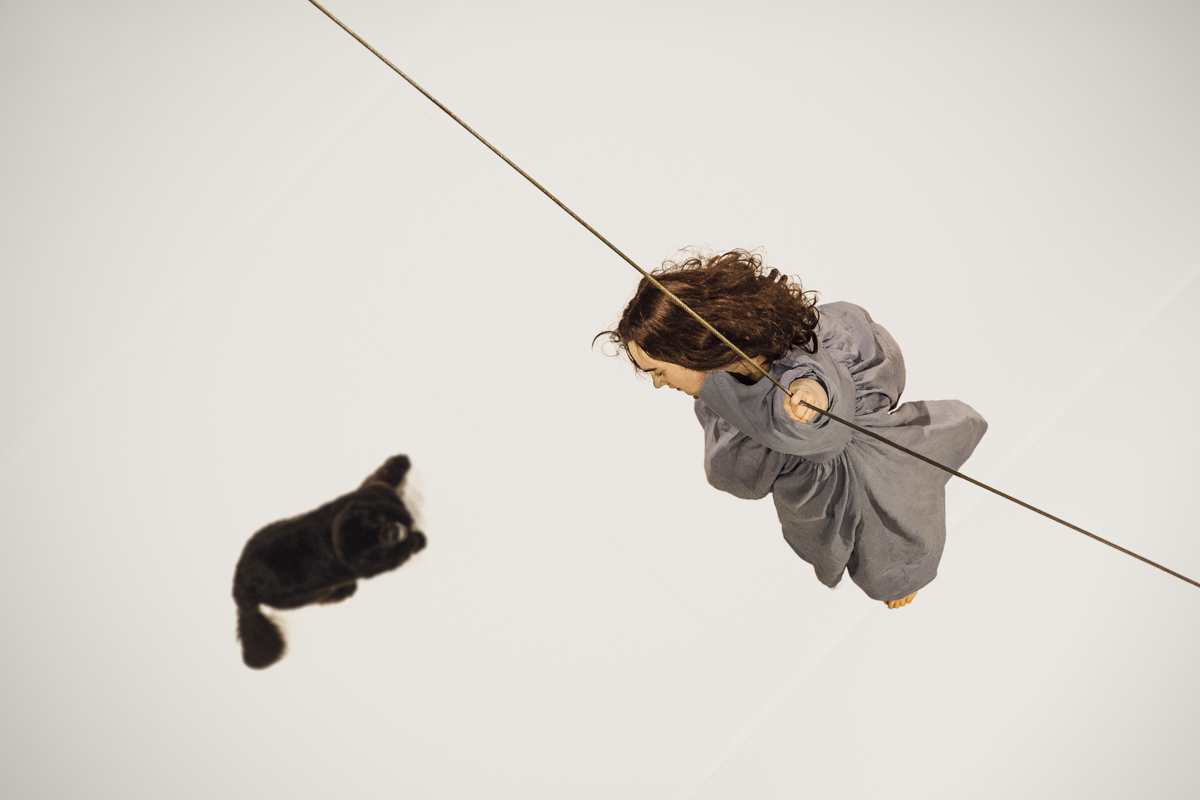ETHICA. Nature and Origin of the Mind

Conception and direction: Romeo Castellucci
Text: Claudia Castellucci
Sound: Scott Gibbons
With: Silvia Costa
Male voice: Bernardo Bruno
and 6 supporting artists
Sculptures: Istvan Zimmermann and
Giovanna Amoroso - Plastikart studio
Technical direction: Massimiliano Peyrone / Filippo Mancini
Sound engineer: Matteo Braglia / Michele Braga
Production supervisor: Benedetta Briglia
Organization and promotion: Gilda Biasini, Giulia Colla
Administration: Simona Barducci, Elisa Bruno,
Massimiliano Coli and Michela Medri
Production: Societas
Co-production: T2G-Théâtre de Gennevilliers
centre dramatique national de création contemporaine
Created in Venice for La Biennale College-Teatro in August 2013
A co-production with: Théâtre de la Ville and Festival d’Automne, Paris
In collaboration with: La Biennale, Venice
Photo: Guido Mencari
The Italian director Romeo Castellucci has drawn inspiration for this project from the works of the Dutch philosopher Spinoza (1632-1677), more specifically from the five books that make up his Ethica.
For each of these books, Romeo Castellucci proposes a theatrical action.
Five, therefore, are the actions that will be conceived over time.
Nature and origin of the mind takes its title from the second book. An earlier version of this work was created in 2013, during a workshop at the Biennale College-Teatro, in collaboration with the Venice Biennale and with the support of the Théâtre de la Ville and the Festival d’Automne in Paris.
There is a young woman hanging from a cable, many metres above the ground. At first glance we can see that the woman is only holding on by the index finger of her left hand. She is on the verge of a dizzying fall. The woman, however, does not appear to be desperate, seeming on the contrary to have full control over this terror. She seems to prolong and live through this instant as though it were a threshold. A doubt arises: this may not be the first phase of a fall but, on the contrary, a levitation, a propulsion, a force. A taught bow, a body that is about to be launched into the air. The woman’s body occupies the higher portion of the space, visualising the cerebral space of the architecture with her presence. Underneath her, among the spectators who observe the scene while standing up, a dog is wandering around. It moves randomly, free to roam among the legs of the spectators. This dogs mews. There is a dialogue between the dog/cat and the hanging woman. The subject of their dialogue revolves around their discovery that they are the fruit of the interior vision of the spectator.
The Dog with the voice of a cat has decided to give voice to a video camera, to be Video-camera. The woman hanging by a finger has decided to give voice to light, to recite the part of Light. And then a third character, made up of the multitude, reacts to the words of the two of them: it is the Mind, the protagonist who gives this action its name.
The title of the performance has been taken from the Second Book of Spinoza’s Ethics, in which the philosopher investigates the nature of superior thought and the working power of the mind, the nucleus or locus in which reality itself is formed. He or she who thinks is one sole thing with reality.
Against this backdrop, the performance branches out into a free deviation, and begins a descent towards the delta, towards the place at which the waters reach their end: an auditorium. The image created in the mind of the artist reaches at last the mind of the spectator, who most certainly receives it, and in receiving it assigns it a form. The performance ideally aims at freezing this thought in the act of receiving the image, not for scientific purposes, but to seal the fusion between the spectator’s reception and the creation of the original image.